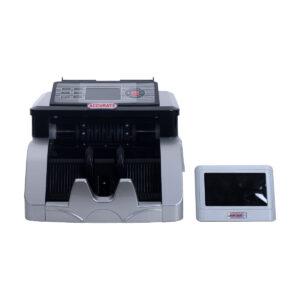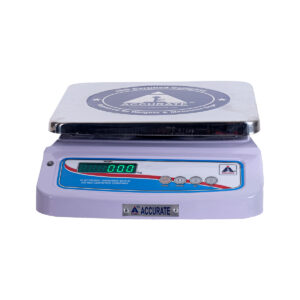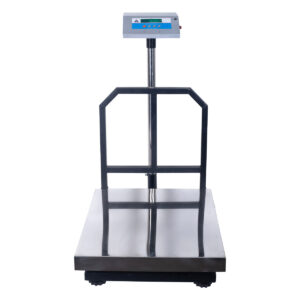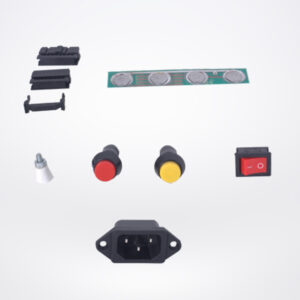Electronic weighing systems are used in industries and business establishments for weighing and segregating materials accurately for process sales.
The main advantages of an electronic weighing system when compared with mechanical weighing systems are: compactness and small size independent of capacity, Ruggedness and high dependability, High speed of response and rapid weighing, Good accuracy, Excellent flexibility to monitor multiple loads, Analog and digital with print-out facility, remote indication and parallel display, Online processing through computer. The electronic weighing system comprises the basic loadcell, suitable signal conditioners and output recorders / indicators giving both the analog and digital output for further processing. The signals from the loadcell are amplified and fed to analog / digital converter, which provide an output in the digital format for display/printing/processing etc. The strain gauge based loadcell is the most popular weight transducer used in the electronic weighing system. Process of Manufacture: The manufacturing process involves the assembly of loadcell, electronic circuits and electro mechanical hardware. Subsequently, the electronics assembly-the ICs, transistors, diodes, resistors, capacitors, transformers, coils, relays and potentiometers are assembled on PCBs as per design. The assembled PCBs are tested for performance. Subsequently the electronics assembly along with electromechanical assembly, hardware such as connectors/switches, terminals, displays, meters are assembled and housed in a metallic / fibre / plastic case with an appealing front panel. Finally the assembled unit is calibrated and tested as per the design specification. Pollution Control: The following steps are suggested which may help to control pollution in electronics industry wherever applicable. In electronics industry, fumes and gases are released during hand soldering / wave soldering / Dip soldering, which are harmful to people as well as environment and the end products. Alternate technologies may be used to phase out the existing polluting technologies. Numerous new fluxes have been developed containing 2-10% solids as opposed to the traditional 15-35% solids. Electronics industry uses CFC, Carbon Tetrachloride and Methyl Chloroform for cleaning of printed circuit boards after assembly to remove flux residues left after soldering and various kinds of foams for packaging.
The main advantages of an electronic weighing system when compared with mechanical weighing systems are: compactness and small size independent of capacity, Ruggedness and high dependability, High speed of response and rapid weighing, Good accuracy, Excellent flexibility to monitor multiple loads, Analog and digital with print-out facility, remote indication and parallel display, Online processing through computer. The electronic weighing system comprises the basic loadcell, suitable signal conditioners and output recorders / indicators giving both the analog and digital output for further processing. The signals from the loadcell are amplified and fed to analog / digital converter, which provide an output in the digital format for display/printing/processing etc. The strain gauge based loadcell is the most popular weight transducer used in the electronic weighing system. Process of Manufacture: The manufacturing process involves the assembly of loadcell, electronic circuits and electro mechanical hardware. Subsequently, the electronics assembly-the ICs, transistors, diodes, resistors, capacitors, transformers, coils, relays and potentiometers are assembled on PCBs as per design. The assembled PCBs are tested for performance. Subsequently the electronics assembly along with electromechanical assembly, hardware such as connectors/switches, terminals, displays, meters are assembled and housed in a metallic / fibre / plastic case with an appealing front panel. Finally the assembled unit is calibrated and tested as per the design specification. Pollution Control: The following steps are suggested which may help to control pollution in electronics industry wherever applicable. In electronics industry, fumes and gases are released during hand soldering / wave soldering / Dip soldering, which are harmful to people as well as environment and the end products. Alternate technologies may be used to phase out the existing polluting technologies. Numerous new fluxes have been developed containing 2-10% solids as opposed to the traditional 15-35% solids. Electronics industry uses CFC, Carbon Tetrachloride and Methyl Chloroform for cleaning of printed circuit boards after assembly to remove flux residues left after soldering and various kinds of foams for packaging.








